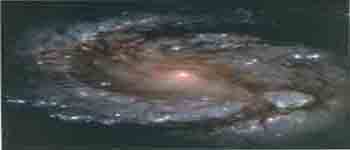Sign up for Lesson Plans, discounts & more!
Accretion Disk: Swirl Art
An Extension Lesson for the Hadean Time
Visualizing the earliest moments following the Big Bang presents teachers a great opportunity. Through this art activity, children are introduced to centripetal force, a fundamental force that impacts natural order. The art activity leads naturally to the water glasses activity that follows.
Here is a brief description of the accretion disk:
Scientists compare the beginning of our universe to the accretion disks that are found throughout our universe. Some theorize that our sun was an accretion disk and the earth formed when some of the material spun away from it. The following definition of an accretion disk may be helpful:
A rotating disk of gas and dust matter that may form around any of a variety of stars or other massive objects. In the case of young stars, accretion disks contain unconsolidated material, such as cosmic dust grains, which may subsequently accrete to form planets and other sizable objects (see planetary systems, formation).
Accretion disks have been observed, or theorized to exist, in association with protostars, T Tauri stars, and other very young stars, Vega‐type stars, and many interacting binary systems, including U Geminorum stars, novae, symbiotic stars, and W Serpentis stars, in which the secondary component is losing matter to the primary. They are also believed to occur commonly around black holes, including stellar black holes in close binary systems and supermassive black holes at the centers of some galaxies. In the latter case, accretion disks are thought to play a crucial role in the active galactic nucleus phenomenon.
From: http://www.daviddarling.info/encyclopedia/A/accretiond.html

“My Art Spinner” by Alex Toys (available through Amazon.com) is a fun way to look at the centripetal force that may be acting on the clouds of dust and gases that create such a disk. Of course, there is another force, gravity, which is acting upon the disk as well. Gravity activities are a great way for children to hone their observation skills, create graphs of data, and, of course, have fun with science investigation. The gravity activities that follow are focused on data collection and observation.
Check out some of the Educational Materials for sale on our sister site fossilicious.com.

interested in more? If so, you may want to check out our other sites:
fossilicious.com - Our online fossil and mineral rock shop.
rocksandminerals4u.com - An educational site about rocks, minerals, and geology.
Geologic Time Geologic Time Line
Cenozoic Era
Quaternary
Neogene
Paleogene
Mesozoic Era
Cretaceous
Jurassic
Triassic
Paleozoic Era
Permian
Carboniferous
Devonian
Silurian
Ordovician
Cambrian
Archean Time
Hadean Time
Teachers Resources
Activities for Education and Fun
Earth Science Lesson Plans
Activities For Kids
Fossil Lesson Plans
Fossil Activities
Education Articles
Coloring Pages
Dinosaur Coloring Pages
Montessori Materials
Geology Club
Fossil Hunting
 |
 |
 |




